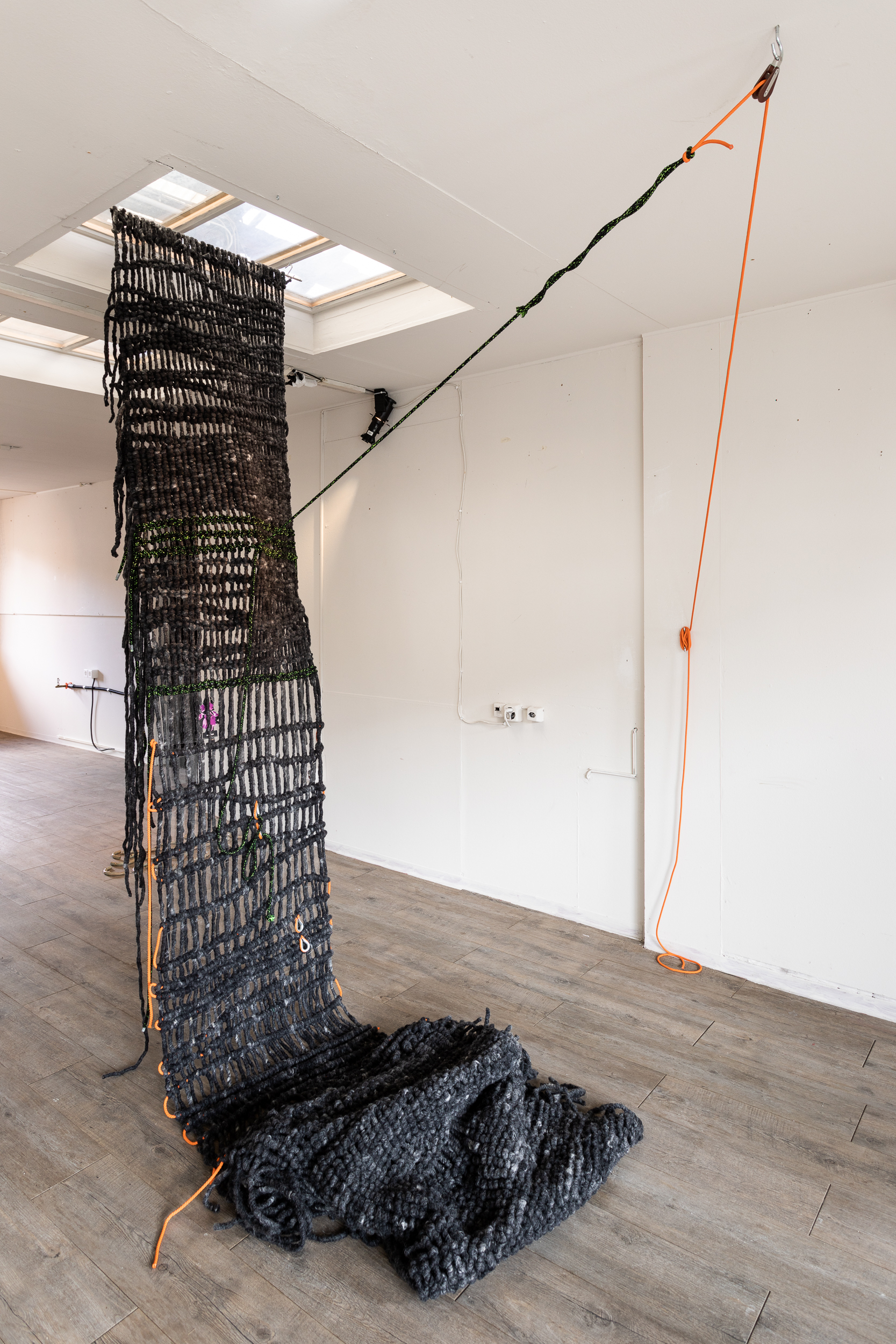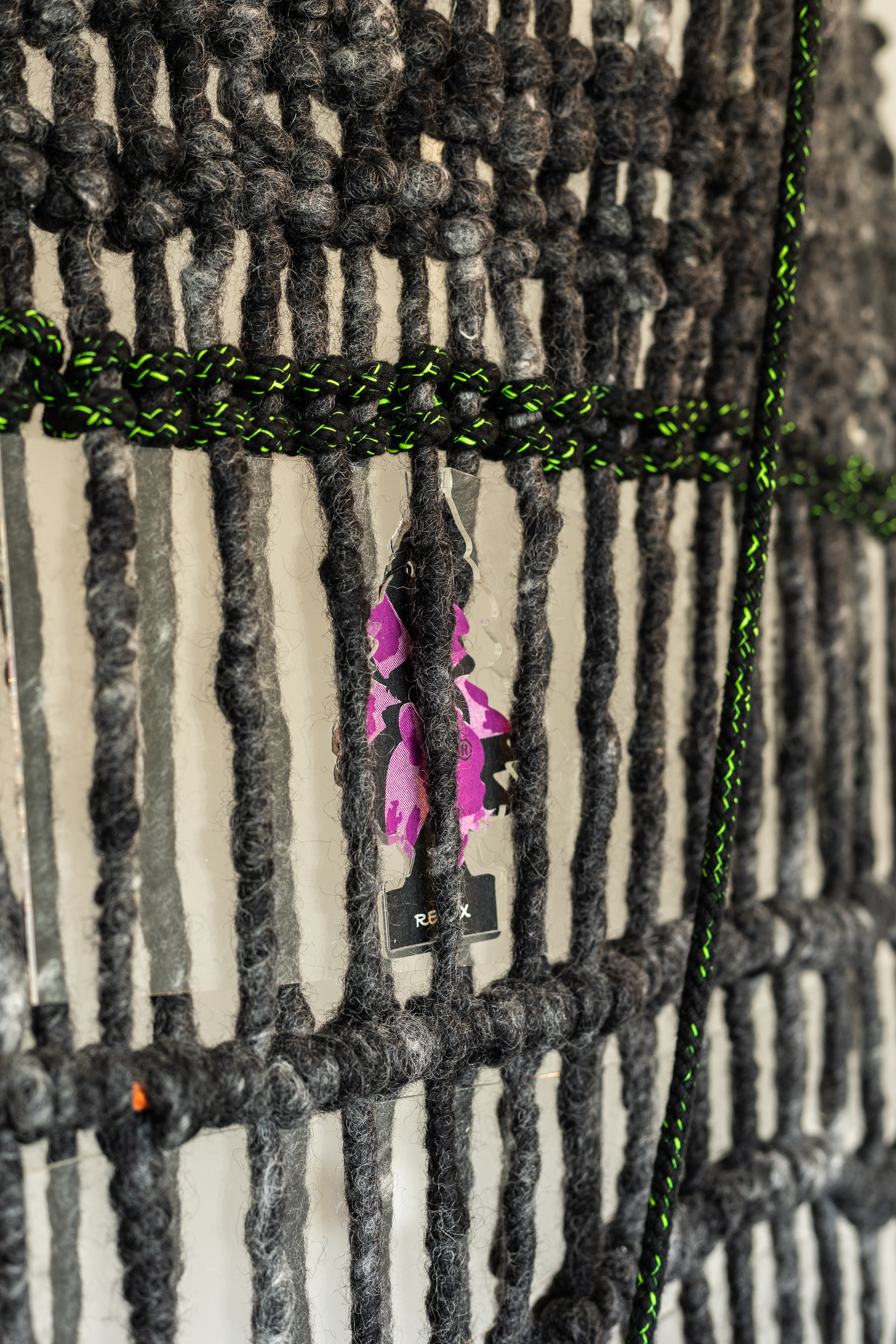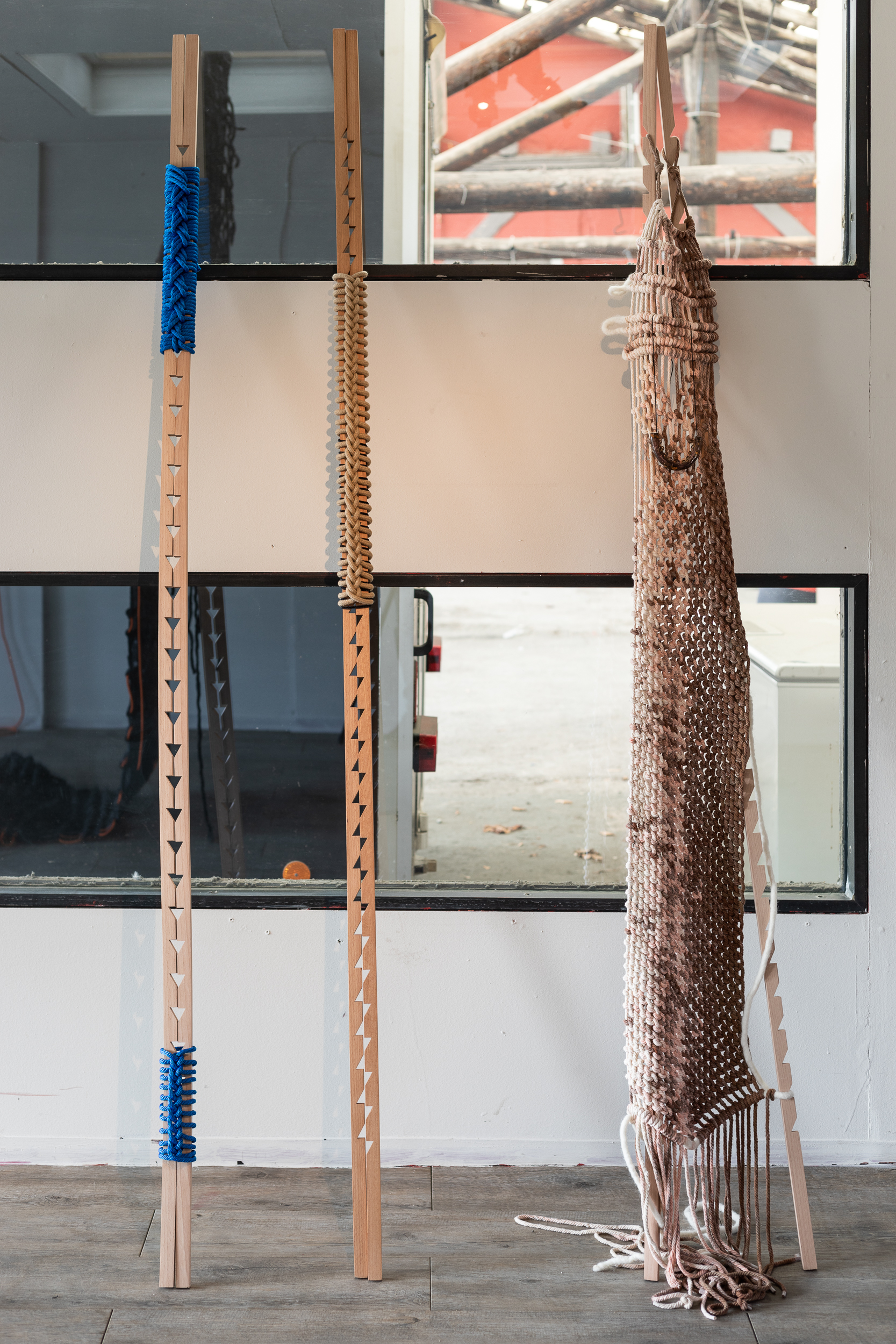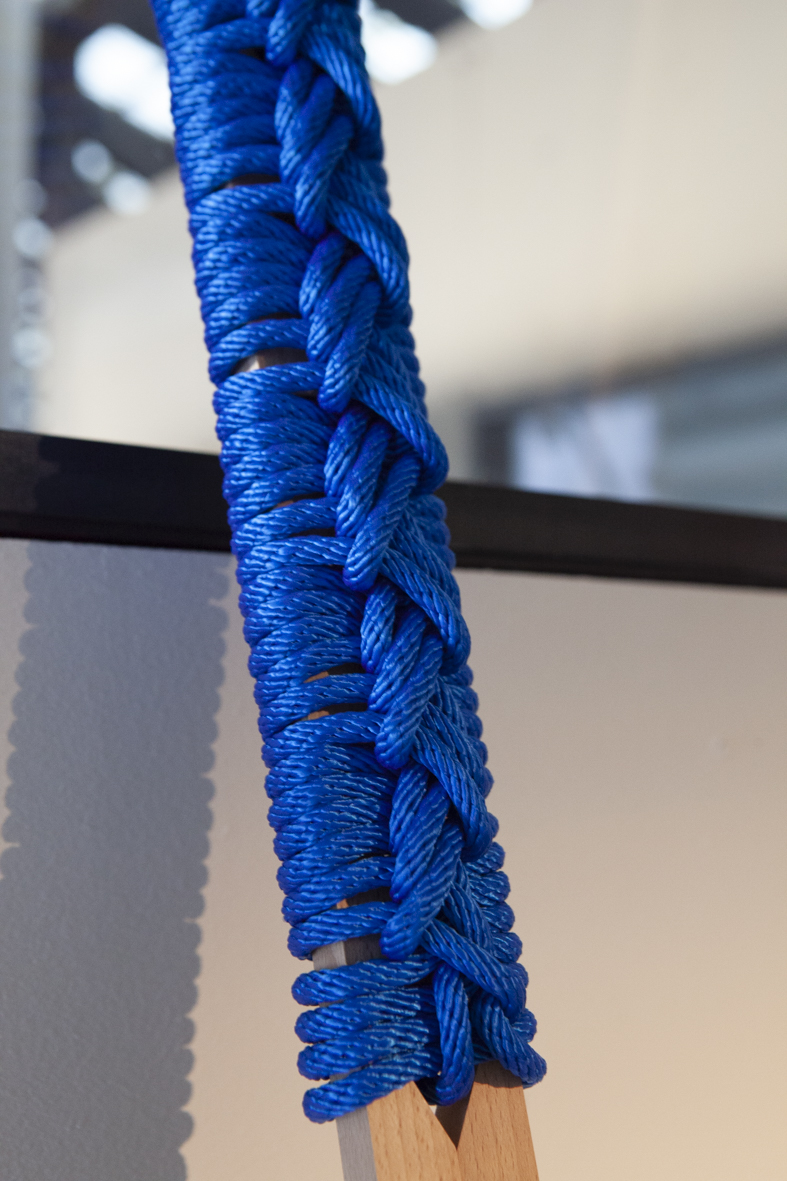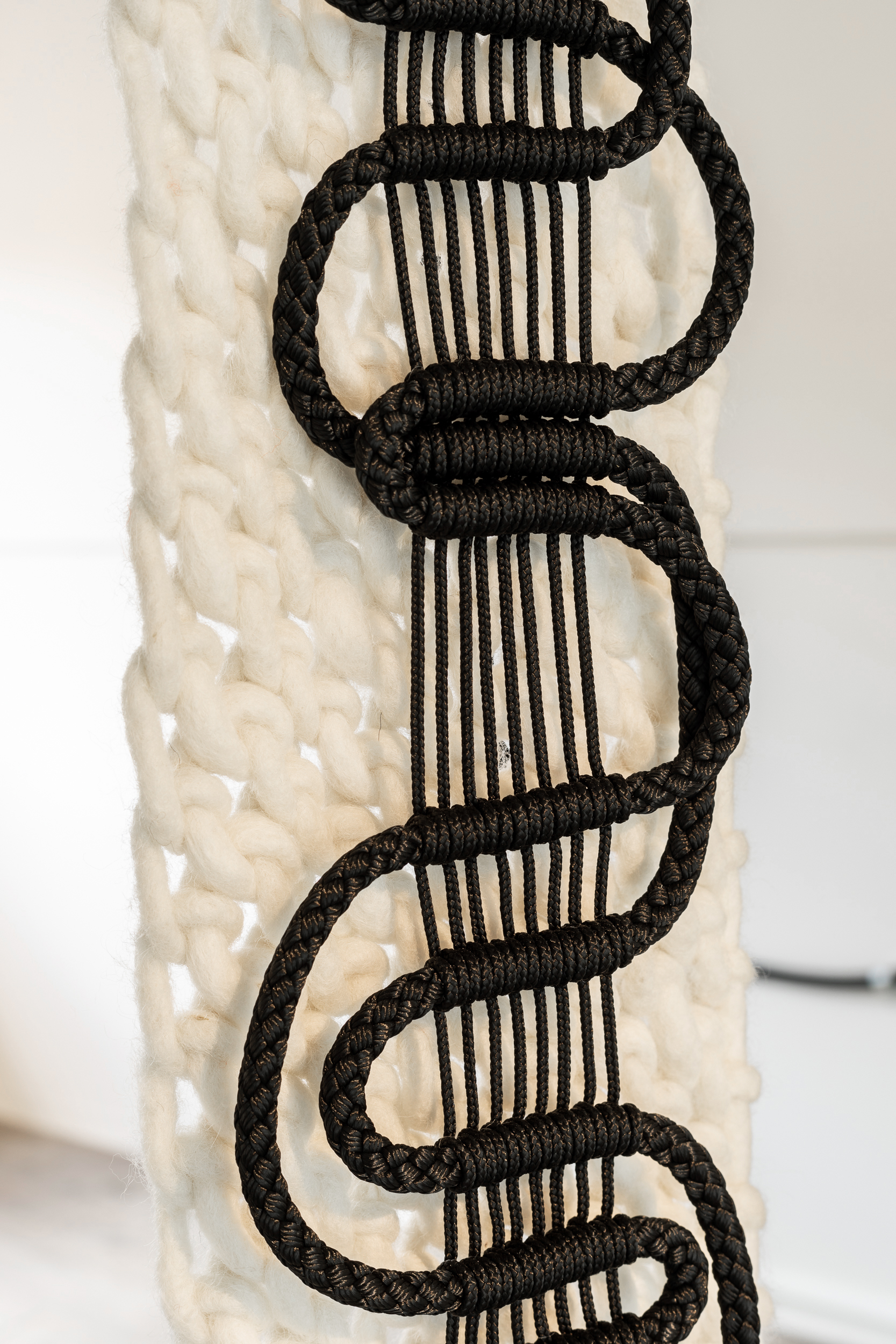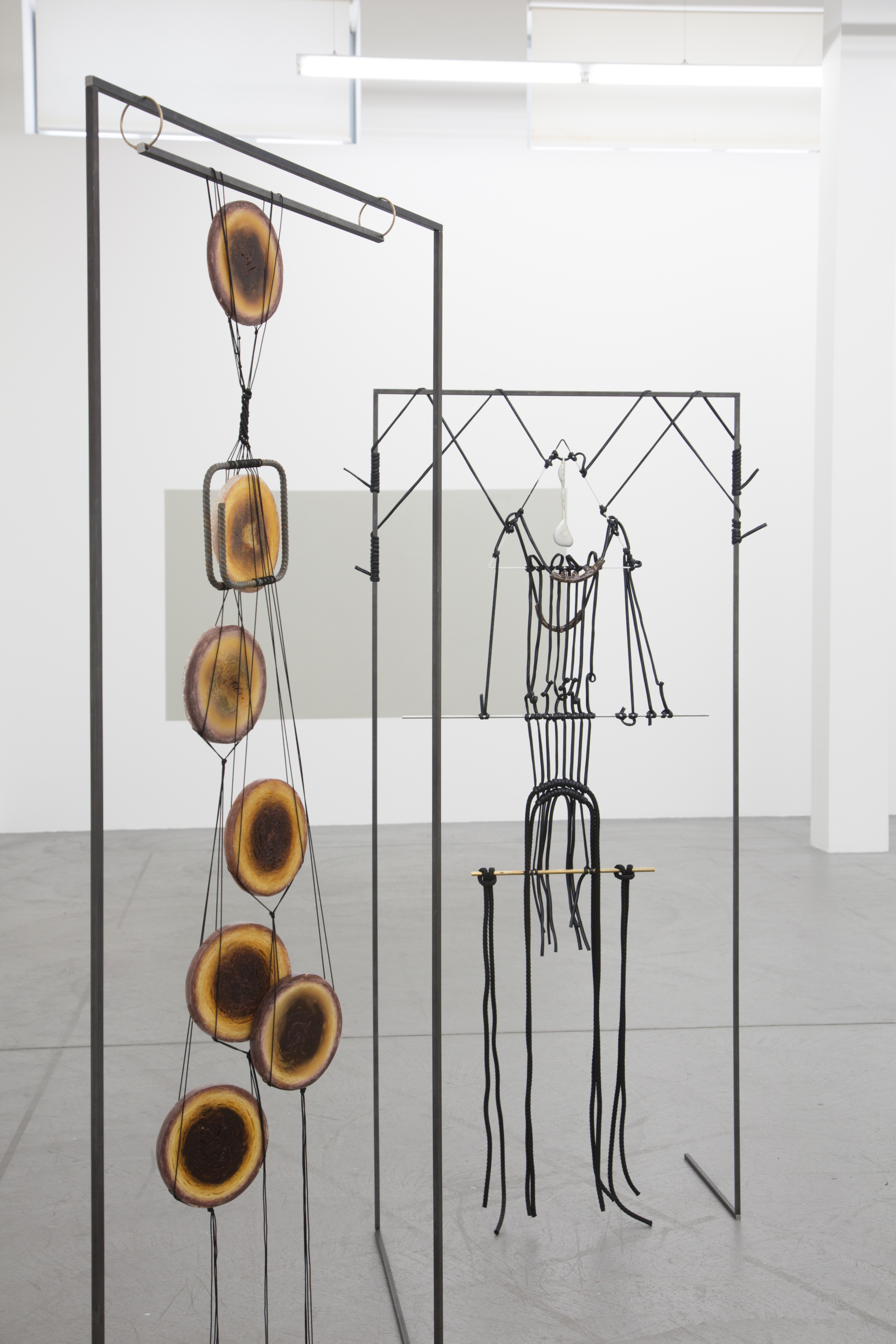H
A
V
E
S
A
N
I
T
Y
Have Sanity
at LAST TANGO
group exhibition with Anton Bruhin, Lissy Funk, Roman Gysin, Liz Magic Laser, Shirana Shahbazi, Manon Wertenbroek, Trevor Yeung
curated by Linda Jensen and Arianna Gellini
https://www.lasttango.info/havesanity
12.02.21 – 10.04.21
Lisa Biedlingmaier’s works are sometimes looser, but no less controlled. She has smeared the window in swirls of fat that feel like a protective charm against invisible invaders. Her work explores knotted forms that echo human ones, portraits of embodied minds, twisted decorously around themselves.
Leila Peacock
Artist Lisa Biedlingmaier has recently been exploring the topic of death, taking on a cross-cultural perspective. Looking at life through the lens of death and the myriad of attitudes and rituals that exist and how death can be looked at in holistic ways. Biedlingmaier’s sculptures contain macramés, rope, felt, resin and porcelain with each material chosen for their imbued connotations be it reflective of our need for security and proximity or our vulnerability as bodily beings with finite lifespans. The location wherein her works are featured was formerly a makeshift party location with local djs mixing records. She has incorporated a Wonder-Baum (Little Trees) air freshner into her work Relax (2021) as a site-specific reaction to the space. A playful gesture implying that the party is over. The artist notes: “I... assign a broad spectrum of meaning to my macramé nodes. Sometimes they stand for tensions and trigger points, sometimes for traces, memories, opinions, concepts–on a physical, mental and spiritual level. Everything that forms and influences our existence.... Sanity is a continuous process. To stay sane requires flexibility and openness to other perceptions, new possibilities, opinions. To be able to embrace the unknown future, and here we come to the topic of death. In the yogi tradition they say, dying is like taking off a shoe that is too small.”
Her recent research on death and “dying wisely” (Stephen Jenkinson) has brought about various questions: What kinds of coping mechanisms are we equipped with? Can we manage our fear of death by becoming macabre or comedic? How can we have an easy-going attitude toward death? Are our phobias all related to the ultimate fear of death? Is death anxiety something that comes out of the unknown or is it heightened by society? How can we as a society take on a shared responsibility in “dying well”?
Linda Jensen and Arianna Gellini
